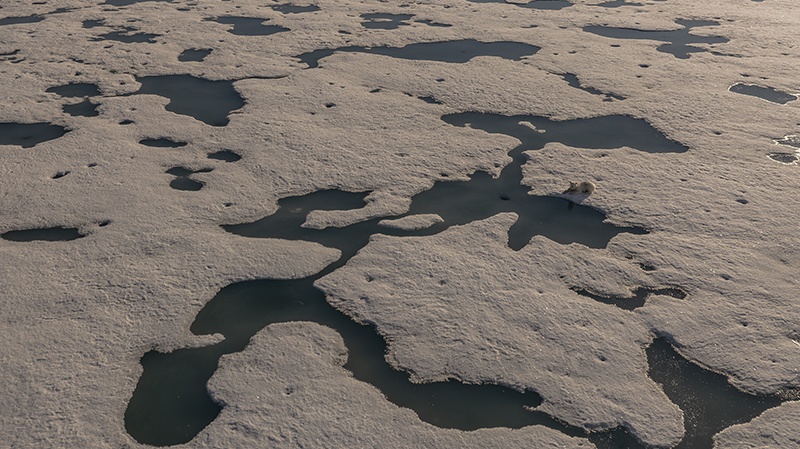One of the rapidly moving glaciers in the Antarctic “steals” the ice of its slower “neighbor” – a process called “Ice piracy”. Scientists made the discovery thanks to detailed satellite observations obtained during the European Mission Copernicus Sentinel -1.
According to data, the average sea level in the world since 1993 rises an average of 3.4 millimeters per year, and over the past 30 years, the total growth has amounted to 10.3 centimeters. The annual average growth of the global level of the sea was 2.1 millimeters from 1993 to 2003, while in the period from 2013 to 2023 it reached 4.3 millimeters.
About 30% of the total increase in the average sea level around the world is explained by the expansion of ocean water, and the rest is largely associated with the melting of glaciers and ice cover at the poles.

Scientists from the University of Lids in the UK found that in Western Antarctica, the speed of glaciers in the seven streams increased, while in one of them a slowdown is observed in the eastern glare. They explain this phenomenon by a peculiar “abduction of ice”: the fast -flowing oriental glare of Cauline “steals” the ice at the neighboring slow -down Western glacier of Kalra.
Using satellite data, scientists have found that since 2005, the speed of ice flows in the area of the attachment line – the place where the glacier begins to swim on the water – increased by an average of 51%. However, the speed of the western glacier glacier of the Cauline decreased by 10%. The greatest acceleration is recorded in neighboring glaciers – the western and eastern glaciers of Koller.
The attachment line (or Grounding Line) is the boundary between the part of the glacier lying on land, and the part that is already swimming in the water. An increase in speed in this zone suggests that the glaciers began to move faster towards the ocean, which is directly related to the melting of ice and an increase in sea level.

The main author of the study, Dr. Heather Selli, explains the slowdown of the cochler-west by redirecting the movement of ice towards the eastern kalra. According to her, this is due to changes in the slope of the surface of the ice – the accelerated eastern coller “takes” the ice from the western one, which she called “icy piracy.”
According to Selli, this discovery is unique. “It was previously believed that such processes have been slowly taking place for a long time, but now we are observing significant changes in less than 18 years,” she said.
Professor Orhan Indje from Istanbul Technical University, commenting on the study, noted that the dynamics of glaciers can change much faster than it was considered. In an interview with Anadola, he noted that observations using Esa Cryosat satellites allow you to study the thickness and speed of glaciers in detail, which helps to quickly identify changes in the ice cover.
Indgea emphasized the key role of climatic changes in the acceleration and slowing down of the ice flows. He noted that an increase in the speed of some glaciers of the Antarctic leads to melting and increasing the level of the oceans.
